

BOEING 767 MODIFICATIONS (148)
ADS-B Out
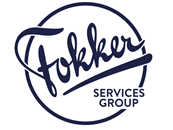

Automatic Dependent Surveillance-Broadcast or ADS-B Out as it is known, is a new Air Traffic Control technique for aircraft in both Non-Radar and Radar Airspace. Guiding aircraft to their destination in a safer more efficient way.
ADS-B is a means by which aircraft, aerodrome vehicles and other objects can automatically transmit and receive data. Identifying themselves and their position via a data-link. This user friendly broadcast mode keeps communication lines open, informing people on the ground and in the air of real time developments. ADS-B out is the first step and will only send data from the aircraft.
Non-reliant on external input the ADS-B Out is automatic, depending solely on existing on-board transmission services to provide surveillance information to other users.
To view the ADS-B Out Webpage, please check: https://www.fokkerservices.com/services/aircraft-modifications/ads-b-out
Underwater Locator Device - ULD - Fokker Services


Events related to aircraft missing over oceanic areas have led to several new requirements, amongst which is the introduction of a long-range Underwater Locator Device (ULD).
The ULD low frequency (8.8kHz) technology is used to increase the range at which aircraft submerged wreckage can be located.
It will be mounted on the aircraft structure free of sound absorbent materials and not in wing sections or empennage. The installation is in accordance with ARINC specification 667, which describes the removal, installation and maintenance aspects of an ULD installation.
Note that the ULD is not to be confused with the Underwater Locator Beacons (ULB) as installed on the CVR and FDRs. The ULD is complementary to the ULB and is mounted to the aircraft structure.
ICAO states that by January 1st 2018 aircrafts flying long range over water with a MTOW>27.000 kg must be equipped with an ULD. Long range over water is determined by the exceedance of the distance from a suitable emergency landing spot. The distance corresponds to 120 min at cruise speed or 400NM whichever is the lesser.
EASA states that by January 1st 2019 Passenger aircraft flying long range over water with a MTOW>27.000 kg and cargo aircraft with MTOW > 45.500kg must be equipped with an ULD. Long range over water is determined by a distance >180 NM from shore.
CARS 121 MOS 11.64 states that aircraft with a MTOW>27.000 kg carrying a life raft should have an ULD by December 2, 2023.
Other authorities have accepted similar rules.
Contact Fokker Services for other aircaft types.
EFB Solution for iPad® (EASA and FAA Certified)

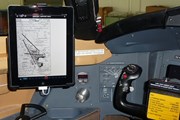
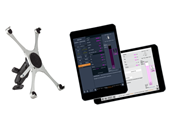
FAA: ST03700NYEASA: 10046185FAA STC EFB 737 ST03939NY
Fokker Services has joined forces with Navtech, Jepessen and Dynamicsource AB, leading providers of flight operations solutions, and developed an EFB solution for iPad® installation that may revolutionize the way we navigate our skies. Technology moves quickly, and at Fokker Services it is our policy to stay ahead of the game. We design and launch more than 300 aircraft modifications every year, believing that even an already functioning product can be improved on. In recent years Apple has captured the hearts of the consumer with their innovative thinking, whilst Navtech represent quality and credibility within the aviation industry. Combined with the history and experience at Fokker, the development of such an innovative yet simple solution felt like a natural progression. Service providers today are under a lot of pressure to meet growing demands. Products must be efficient, safe, cost effective, user and environmentally friendly; Our EFB installation is ticking all the boxes and is available for most aircraft types, including Airbus, Boeing, ATR, Bombardier Challenger & CRJ Family, Embraer, Fokker and others.
Over 1300 installations and upgrades have been ordered
Traffic alert and Collision Avoidance System (TCAS) 7.1

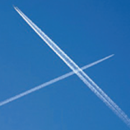
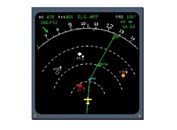
The Traffic alert and Collision Avoidance System (TCAS) has been introduced in order to reduce the risk of mid-air collisions or near mid-air collisions between aircraft. When TCAS II version 7.1 is implemented the probability of mid-air collisions will be reduced significantly. *
The introduction of TCAS change 7.1 software is available for Fokker 50, Fokker 70 and Fokker 100 aircraft as well as for other types of aircraft like Airbus A318, A319, A320, A321, Boeing 737 series, 757, 767, Bombardier Dash 8 and CRJ. (* source: www.eurocontrol.int)
TCAS 7.1 upgrade on B767 (EASA - FAA)
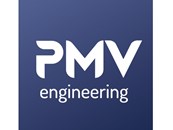
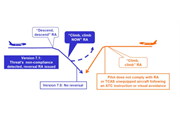
TCAS 7.1 upgrade on B767.
This STC covers almost all existing TCAS premod configuration with Collins, Honeywell and ACSS products.
Installation of SBAS-capable Honeywell IMMR on Boeing 767
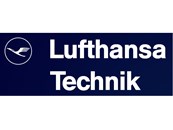

As the air traffic is continuously growing, there is a steady increasing demand on improving navigation systems and landing efficiency. The Integrated Multi Mode Receiver (IMMR) is a comprehensive and fully digital navigation receiver that integrates Instrument Landing Systems (ILS), Global Position Systems (GPS), GPS Landing System (GLS) and VHF Omnidirectional Radio Range (VOR) functionality.
Lufthansa Technik’s (LHT) STC enables you to replace existing Multi Mode Receivers in order to extend the functionality of your aircraft by a Satellite Based Augmentation System (SBAS) - capable GPS module as well as ILS.
SBAS is a navigation aid that augments the Global Navigation Satellite System (GNSS) providing a more accurate and reliable navigation service.
The Instrument Landing System (ILS) is a navigational aid and provides position data of the airplane for landing approaches. It is designed to receive and process localizer and glideslope information.
The activation of VOR, GLS and Marker Beacon is not yet a part of the scope of this above listed STC.
The above listed EASA STC has been validated or approved by the following aviation authority agencies:
-
FAA (ST04442NY, Date of issue: 2020/01/31)
-
TCCA (SA19-103, Date of issue: 2019/10/25)
-
Government of Aruba, Ministry of Transport, Communications and Primary Sector (DL/192349-C, Date of issue: 2019/11/27)
Installation of a Talon Aerospace Anti-Collision Light

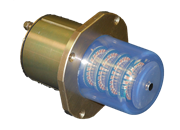
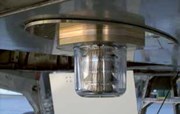
The 1st FAA Certified LED Anti-Collision Light for Commercial Aircraft
Dependability, Weight Savings and Inventory Reduction
The Talon Aerospace anti-collision centerline/fuselage strobe light is designed to replace all incandescent based centerline lights installed on Boeing, Airbus, McDonnell/Douglas, Embraer, Bombardier and other regional aircraft.
During retrofit the operator will purchase an install kit, which includes an adaptor and harness assembly. On airframes that have accessibility provisions inside the interior the upper centerline light allows removal from inside the cabin. The harness and adaptor will last the lifetime of the airframe.
Talon and Proponent
Proponent is the exclusive global distributor of all Talon Aerospace products. This relation provides customers with the latest generation of LED lights.
Proponent is the new identity representing Kapco Global and Avio-Diepen as one united company, and the unique capabilities that the new organization brings to the aerospace market. With extensive experience in supporting the MRO, OEM and airline markets, our organization offers innovative inventory and supply chain management solutions to OEM and aftermarket customers.
Introduction of SSR Mode S Enhanced Surveillance System
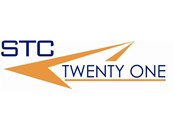

Introduction of Mode S SSR (Secondary Surveillance Radar) which is a process that allows selective interrogation of aircraft according to the unique 24-bit address assigned to each aircraft. Recent developments have enhanced the value of Mode S by introducing Mode S EHS (Enhanced Surveillance).
Introduction of change 7.0 ACAS II and dual mode S transponders


As specified in ICAO Annex 10:
ACAS I - provides information as an aid to “see and avoid” action but does not include the capability for generating RAs
ACAS II - provides vertical RAs in addition to TAs
Installation of antenna mounting provisions


This design change will introduce structural provisions for the installation of a low profile LBand dual element antenna on the upper fuselage skin of 757 aircraft.

